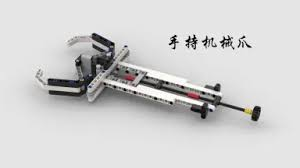
1 | # ===== 第一课时:函数的定义与使用 ===== |
1 | # ===== 第一课时:函数的定义与使用 ===== |
Custom Robot URDF with Moveit2
使用solidworks URDF exporter.
需要注意不要使用
lock constrain限制零件位置。
https://moveit.picknik.ai/main/doc/examples/examples.html#integration-with-a-new-robot
首先克隆moveit2的示例仓库:
1 | git clone -b humble https://github.com/moveit/moveit2_tutorials |
编译项目colcon build,启动setup assistant:
1 | ros2 launch moveit_setup_assistant setup_assistant.launch.py |
随后按照教程配置SRDF。
配置完成后可以启动示例代码:
1 | ros2 launch panda_moveit_config demo.launch.py |
会将机械臂可视化并且拖动目标位置之后可以plan&execute。
涵盖范围:公交地铁,便利店
主打一个方便
涵盖范围:免税店,大型百货,便利店 (餐饮小店可能不支持)
支持ZFB退税
兑换一些以备不时之需
详细信息:
https://www.visitbusanpass.com/
预约:小红书Yacht G_Busan Pass
一、 自觉遵守团队活动纪律,尊敬师长、友爱同学,讲文明、懂礼貌,有诚信。
二、 按时、按量参加团队活动,不迟到,不早退,有病有事先请假(提前两周),不无故缺席(超过三次劝退)。
三、 认真刻苦、积极进取,正确对待学习中的困难和挫折,保持健康心理。
四、 爱护公共财物,规范使用各类活动器具,杜绝人身伤害事故及物品损坏事故的发生。
五、 学期内,活动缺席超过3次的(因身体突发疾病等特殊情况另行处理)的学员视作自动放弃课程活动
一、 自觉遵守团队活动纪律,尊敬师长、友爱同学,讲文明、懂礼貌,有诚信。
二、 按时、按量参加团队活动,不迟到,不早退,有病有事先请假(提前两周),不无故缺席(超过三次劝退)。
三、 认真刻苦、积极进取,正确对待学习中的困难和挫折,保持健康心理。
四、 爱护公共财物,规范使用各类活动器具,杜绝人身伤害事故及物品损坏事故的发生。
五、 学期内,活动缺席超过3次的(因身体突发疾病等特殊情况另行处理)的学员视作自动放弃课程活动。
https://mindplus.dfrobot.com.cn/catalog
process:
KAF-Net: Part-level Kinematic Relation Graph Generation For Robot Manipulation
| backbone | In. Aug | class balance | $mAp_{50}$ | $R@10/20/40$ | $mR@10/20/40$ |
|---|---|---|---|---|---|
| SwinT | MCM | yes | 24.2 | 33.4/53.8/73.9 | 25.1/52.9/69.2 |
| no | 23.4 | 43.5/62.3/78.7 | 26.9/55.3/67.9 | ||
| Single | yes | 23.5 | 32.3/51.6/69.2 | 34.4/52.9/65.4 | |
| no | |||||
| ResDCN | MCM | yes | 23.1 | 32.8/52.8/70.1 | 24.8/52.8/67.7 |
| no | train~ | ||||
| Single | yes | 20.5 | 39.9/54.3/69.3 | 37.7/51.2/65.1 | |
| no | 22.3 | 33.8/52.4/69.4 | 35.7/55.6/66.7 | ||
On swint_cb_mcm: |
| Image-Mask Branch | $mAp_{50}$ | $mR@10/20/40$ |
|---|---|---|
| Yes | ||
| No |
| VLM | VI | VR | unVR |
|---|---|---|---|
| Gemini 2.5 Flash | |||
| Pixtral 12B |
Task Planning:
example:
process:
KAF-Net: Part-level Kinematic Relation Graph Generation For Robot Manipulation
| backbone | In. Aug | class balance | $mAp_{50}$ | $R@10/20/40$ | $mR@10/20/40$ |
|---|---|---|---|---|---|
| SwinT | MCM | yes | 24.2 | 33.4/53.8/73.9 | 25.1/52.9/69.2 |
| no | 23.4 | 43.5/62.3/78.7 | 26.9/55.3/67.9 | ||
| Single | yes | 23.5 | 32.3/51.6/69.2 | 34.4/52.9/65.4 | |
| no | 24.2 | 32.7/51.4/68.6 | 25.2/53.5/66.3 | ||
| ResDCN | MCM | yes | 23.1 | 32.8/52.8/70.1 | 24.8/52.8/67.7 |
| no | 23.4 | 36.9/52.5/69.9 | 23.9/47.8/62.4 | ||
| Single | yes | 20.5 | 39.9/54.3/69.3 | 37.7/51.2/65.1 | |
| no | 22.3 | 33.8/52.4/69.4 | 35.7/55.6/66.7 | ||
| On Swin Transformer with class balance: |
| Image-Mask Branch | $mAp_{50}$ | $mR@10/20/40$ |
|---|---|---|
| Yes | ||
| No |
| VLM | VI | VR | unVR |
|---|---|---|---|
| Gemini 2.5 Flash | |||
| Pixtral 12B |
在大型语言模型(LLM)驱动的问答和内容生成领域,检索增强生成(Retrieval-Augmented Generation, RAG)已成为一项基础技术。然而,传统的 RAG 依赖于向量相似度搜索,如同在图书馆中寻找内容相似的书籍,却常常忽略了书籍之间、作者之间以及知识点之间错综复杂的关系。为了突破这一局限,Graph RAG 应运而生,它通过引入“知识图谱”,为 RAG 系统装上了能够理解和导航数据关系的“智慧大脑”,实现了从“相关性检索”到“关联性推理”的重大飞跃。
标准 RAG 的工作流程通常是:
将大量文档切分成独立的文本块(chunks)。
将这些文本块向量化后存入向量数据库。
当用户提问时,将问题向量化并在数据库中进行相似度搜索,找出最相关的几个文本块。
将这些文本块作为上下文(Context)连同问题一起提供给 LLM,生成最终答案。
这种方法的缺陷在于,它处理的是孤立的信息片段。如果一个答案需要整合来自多个不同但相互关联的文档中的信息,标准 RAG 就可能力不从心。
Graph RAG 则彻底改变了数据的组织和检索方式:
构建知识图谱: 它不再仅仅是切分文档,而是利用 LLM 从非结构化文本中提取出关键的实体(Entities)和它们之间的关系(Relationships)。例如,从“埃隆·马斯克是特斯拉的CEO,该公司总部位于美国”这句话中,可以提取出实体“埃隆·G马斯克”、“特斯拉”、“CEO”、“美国”,以及关系“(马斯克)-是-(CEO)-属于-(特斯拉)”和“(特斯拉)-总部位于-(美国)”。
图谱化存储: 这些实体作为“节点(Nodes)”,关系作为“边(Edges)”,共同构建成一个庞大而精细的知识网络,并存储在专门的图数据库中。
基于关系的检索: 当用户提问时,Graph RAG 不仅进行语义搜索,更重要的是在图谱上进行遍历和路径查找。它能识别问题中的核心实体,然后在图谱中探索这些实体的邻近节点和多层关系,从而收集到一个结构化、高度关联且富有深度的上下文。
生成精准答案: 最后,将这个包含丰富实体和关系信息的子图(sub-graph)作为上下文提供给 LLM,使其能够基于清晰的逻辑链条进行推理,生成更精准、更具解释性的答案。
简单来说,标准 RAG 问的是“哪些文档与我的问题最像?”,而 Graph RAG 问的是“与我问题相关的实体有哪些?它们之间存在什么样的联系?这些联系如何共同解答我的问题?”
Graph RAG 的实现依赖于一个强大的技术栈,它融合了自然语言处理、图技术和大型模型。
大型语言模型 (LLMs): 在 Graph RAG 中扮演双重角色。
知识提取器: 在构建图谱阶段,使用 LLM 强大的自然语言理解能力,从海量非结构化或半结构化文本中自动识别实体和关系,极大地降低了知识图谱的构建门槛。
推理与生成器: 在查询阶段,LLM 负责理解从图谱中检索到的结构化上下文,并基于这些关系进行推理,最终生成流畅、准确的自然语言答案。
知识图谱 (Knowledge Graphs): 这是 Graph RAG 的核心。它以图的形式组织信息,完美地契合了真实世界中知识相互关联的特性,使得复杂的“多跳问题”(需要跨越多个信息点才能回答的问题)得以解决。
图数据库 (Graph Databases): 专为存储和查询知识图谱而设计的数据库,如 Neo4j, NebulaGraph, Amazon Neptune 等。与传统关系型数据库相比,图数据库能以极高的效率执行关系遍历和路径查找操作,这对于实时响应 Graph RAG 的复杂查询至关重要。
图算法与图机器学习:
社区发现算法 (e.g., Leiden): 在构建图谱后,可以对节点进行聚类,形成不同的“社区”或“主题域”。这使得 Graph RAG 可以实现“全局搜索”,先定位到最相关的社区,再进行细粒度检索。
图嵌入 (Graph Embeddings): 将图中的节点和关系也表示为向量,使得图结构信息可以和文本语义信息在同一个向量空间中进行融合与检索。
Graph RAG 的优势在于处理需要深度推理、上下文理解和关系挖掘的复杂场景,因此在以下领域展现出巨大潜力:
金融风控与合规: 在反欺诈场景中,Graph RAG 可以轻松识别出看似无关的交易、账户和个人之间隐藏的关联,揭示复杂的欺诈网络。在合规审查中,它可以将法规条款、公司行为和交易数据连接起来,提供可追溯、可解释的合规判断。
生物医学与药物研发: 生物医学领域充满了复杂的相互作用,如基因、蛋白质、疾病和药物之间的关系。Graph RAG 能够整合海量论文、临床试验数据和基因数据库,帮助研究人员发现新的药物靶点、预测药物副作用,或为特定患者提供个性化的治疗方案建议。
供应链管理: 现代供应链是一个复杂的全球网络。Graph RAG 可以整合供应商、物流、库存、市场需求和地缘政治风险等数据,当出现“某国港口关闭”等事件时,能迅速分析出受影响的上下游企业和产品,并推荐替代方案。
企业智能知识管理: 大型企业内部知识分散在不同部门的文档、报告和数据库中。Graph RAG 可以将这些知识整合成一个统一的、相互关联的企业知识图谱,让员工能以自然语言提问,获得跨部门、高精度的答案,例如“去年哪个产品的研发项目同时涉及了上海和硅谷的团队,并且项目负责人是谁?”
个人化推荐系统: 通过构建用户、产品、偏好和行为之间的关系图谱,Graph RAG 能够提供超越“购买此商品的人也购买了…”的简单推荐,实现更深层次的、基于兴趣和逻辑关联的个性化内容或产品推荐。